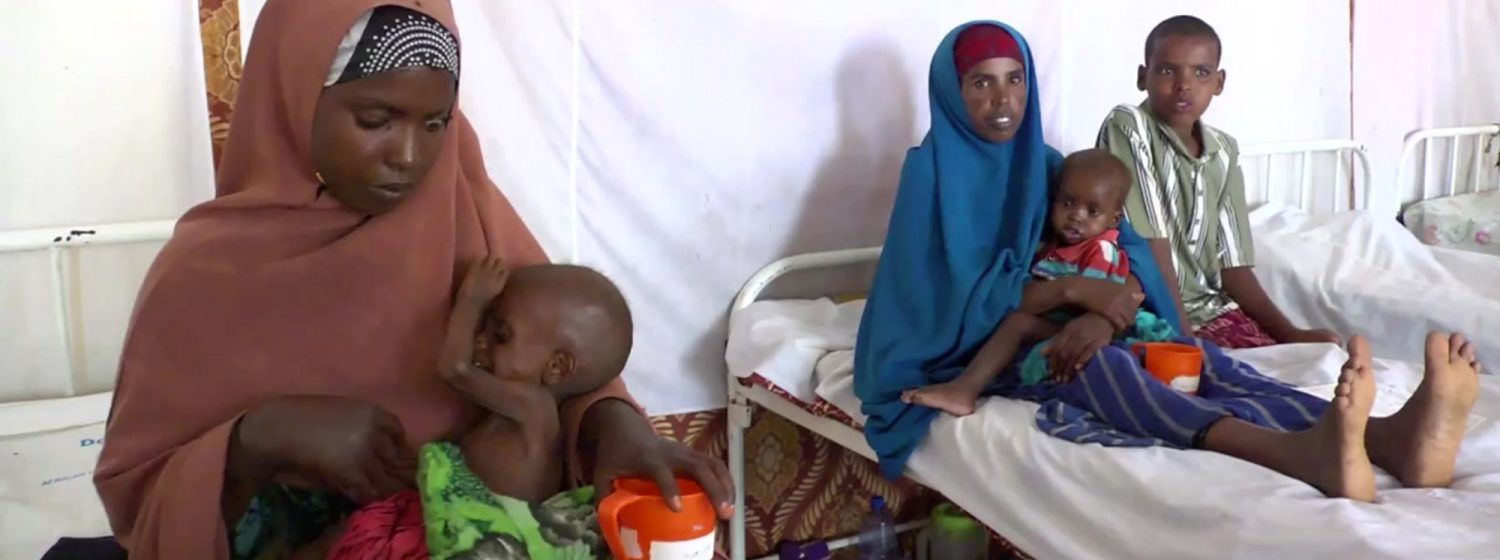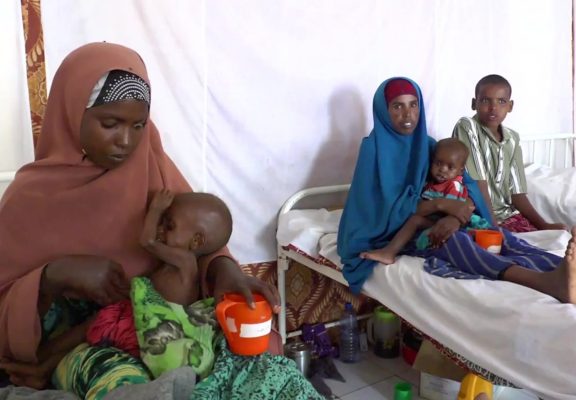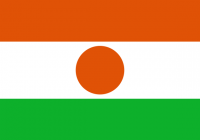


Niger
Niger, officially the Republic of Niger, is a landlocked country in Western Africa, named after the Niger River. Its population is 17 million people and GDP per capita of USD 415.
The Republic of Niger is a vast landlocked country in the Sahel, two-thirds of which is desert, and is considered as one of the least developed countries in the world. The government currently relies on foreign donor resources for a large portion of its budget, including health, and has committed to substantially increasing government resources for the health sector in the coming years. Niger has made remarkable progress in cutting under-five mortality over the past decade. Despite these efforts, malaria remains a major public health problem. The HIV epidemic is concentrated amongst vulnerable populations, including men who have sex with men, sex workers, prisoners and migrants. The Global Fund is one of the main financial partners in Niger in the fights against AIDS, TB, and malaria, and also invests heavily in building resilient and sustainable systems for health.
AHO PRIORITIES FOR HEALTH DELIVERY PLAN IN NIGER
- Mobilization of external resources
- Linking public health with economic and social development.
- Advancing toward an integrated model of health care.
- Guaranteeing equitable, high-quality health services.
- Facing emerging problems through the explicit definition of priorities.
Reducing the lags in health that affect the poor
PROGRAMMES & PROJECTS
1. MANAGEMENT OF THE REPRESENTATION
PURPOSE
To increase the effectiveness of technical and administrative management of human, material, and financial resources of the AHO technical cooperation program in the country.
EXPECTED RESULTS
- Managerial controls set up and adapted to the prevailing regulations and standards of the Organization and to those applicable to the country’s situation.
- The most cost-effective operating budget requested for AHO Office.
- Operation of the local and international components properly supervised.
2. SUPPORT FOR NATIONAL HEALTH DEVELOPMENT
PURPOSE
To mobilise financial and technical resources for technical cooperation in priority areas
EXPECTED RESULTS
- Cooperation networks established with other countries, with AHO acting as the coordinating institution that mobilizes resources, with the consequent benefits.
- AHO technical cooperation in the country programmed and evaluated, with emphasis on coordination with the Secretariat of Health as the steering agency of the public health system.
- Technical and administrative management activities with human resources involved in the development of the AHO Office modernized to effectively meet technical cooperation needs.
- Interinstitutional cooperation initiatives carried out with technical cooperation from AHO in the design, negotiation, and execution phase.
3. PUBLIC HEALTH AND ECONOMIC AND SOCIAL DEVELOPMENT
PURPOSE
To make public health a more integral part of economic and social development plans.
EXPECTED RESULTS
- Efforts made to raise awareness to encourage the exercise of rights, mobilize resources, and enforce regulations, with an emphasis on disadvantaged social groups.
- Cooperation networks strengthened, along with inter-sectoral and social partnerships that facilitate public health promotion in social settings.
- Effective public health plans, projects, and policies developed and evaluated.
4. ENVIRONMENTAL HEALTH AND DEVELOPMENT
PURPOSE
To achieve healthy, safe, and sustainable environments protected against the threats of adverse environmental factors (chemical, physical, and biological).
EXPECTED RESULTS
- Program of priority health services developed (including the preparation of policy plans) within the framework of procuring sustainable development.
- Surveillance and information systems on environmental health management strengthened.
- Policies, plans, and projects to improve basic sanitation and environmental quality promoted.
- Surveillance and monitoring capacity increased, and the potential of human resources in workers’ health developed.
- Strengthened networks and inter-sectoral and social partnerships that favor health promotion in social settings.
- Health plans, projects and policies developed and evaluated.
- Tobacco use reduced.
- Health promotion component strengthened with respect to domestic violence.
5. HEALTH AND SANITARY PROTECTION OF FOOD
PURPOSE
To lower the risks from foodborne diseases and zoonoses and reduce obstacles to the production and trade of animals and animal products (protein deficiencies)
EXPECTED RESULTS
- Strategies, standards and guidelines developed that strengthen the national services in their leadership of the systems for the prevention and animal diseases.
- Surveillance systems and systems to improve the design and execution of operations research, animal health, and laboratory diagnosis strengthened.
- Plans and projects developed to strengthen the national services in terms of infrastructure and senior management.
6. STRENGTHENING OF THE NATIONAL STEERING ROLE AND PERFORMANCE IN HEALTH
PURPOSE
To advance the consolidation of a national information and epidemiological surveillance system for analysis, policy-making, and the dissemination of information
EXPECTED RESULTS
- Progress made in establishing a Health Situation Room (SDSS), and in prevention, mitigation, and intervention in disasters and health emergencies.
- Interinstitutional coordination and cooperation networks improved to ensure coherence, quality, availability, and the dissemination of health information.
- National Epidemiological Surveillance System for health care and prevention strengthened
7. DEVELOPMENT OF THE PUBLIC HEALTH SYSTEM AND SERVICES
PURPOSE
To strengthen institutional capacity to facilitate efficient management and regulation of the health services system
EXPECTED RESULTS
- Surveillance and information systems on quality and economic protection of the population benefit from the specifications and technical criteria endorsed by AHO.
- Cooperation and partnership networks developed for socially-oriented health care programs.
- Training programs provided on health care management based on economic analysis, productivity, and efficiency.
- Plans of action, projects, and policies for human health resources developed and executed, in conjunction with training institutions and institutional service providers.
- Contribution by the national authority to the adoption of modern models, methods, and technologies for the sanitary regulation of products and services.
8. INTERVENTION IN PRIORITY AND EMERGING PUBLIC HEALTH PROBLEMS
PURPOSE
To strengthen the approach to health promotion by addressing priority and emerging public health problems
EXPECTED RESULTS
- Mental health component of the health care model strengthened.
- Consumption of addictive substances reduced.
- Comprehensive care models for adolescents, older adults, and the disabled strengthened.
- Coverage, inter-sectoral approach, and quality of nutritional and reproductive health programs strengthened.
9. DISEASE PREVENTION AND CONTROL
PURPOSE
To increase the capacity of national health institutions in the surveillance, prevention, and control of priority communicable and noncommunicable diseases
EXPECTED RESULTS
- Networks and partnerships developed to expand coverage of the Immunization Program.
- National programs for the prevention and control of TB, VBD and HIV/AIDS benefiting from the results of the studies and adoption of the technical criteria endorsed by AHO.
- Local plans, projects, and policies established for the prevention and control of diabetes mellitus, cardiovascular diseases, hypertension, cervical cancer, and other malignant neoplasms.
- Local surveillance system for accidental and intentional injuries up and running in model areas.
- Contribution to the adoption of methods, techniques, technologies, and models to improve the capacity to diagnose communicable diseases and regulate biologicals for human use.
- Training programs implemented for compliance with health legislation governing blood banks and transplants.
RESOURCES (USD)
AHO NIGER 2020 (USD million)* based on 2017 pop 21.48 million World Bank
| SO | BUDGET ITEM | AMOUNT* |
| 1 | Combating communicable diseases |
170 |
| 2 | Tackling non communicable diseases |
200 |
| 3 | Addressing determinants of health & risk factors |
140 |
| 4 | Modernising health system and health service |
270 |
| 5 | Improving preparedness, surveillance and response |
150 |
| 6 | Developing good governance & corporate services |
170 |
| Total |
2,148 |
AHO estimates that it needs to spend at least USD100 per capita on health to meet the basic health needs of the people in Africa. This is too far below developed countries e.g. in England it is US$1,300 per capita (2017)

